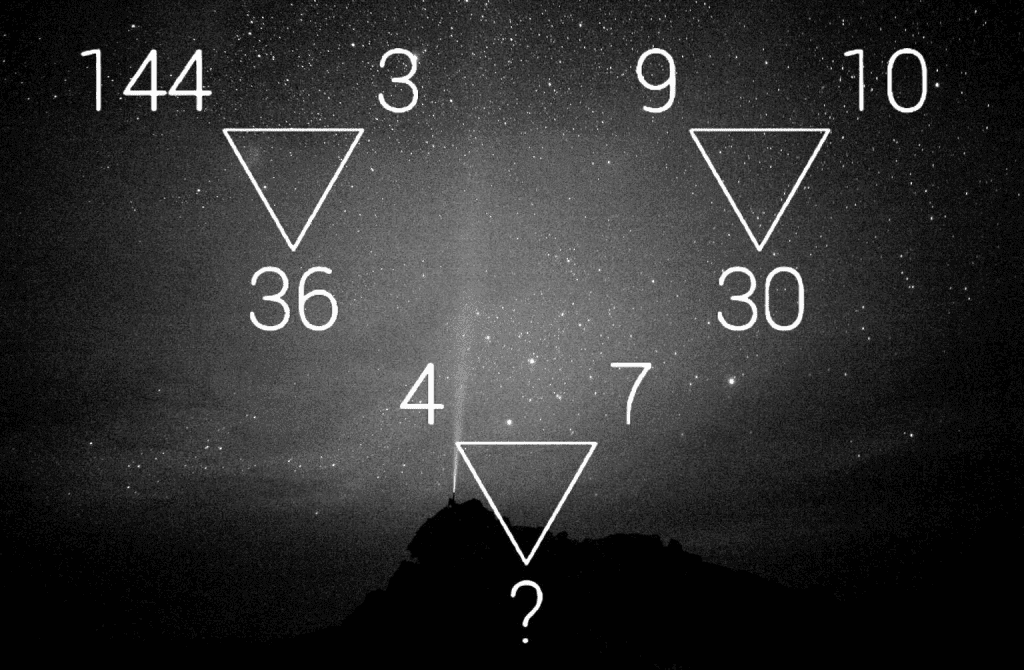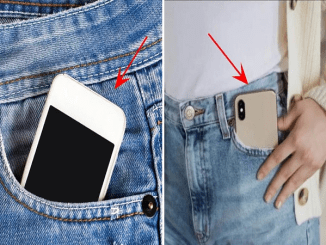Do you enjoy stretching your mental muscles with a good puzzle? If so, here’s an intriguing mathematical brain teaser that will challenge your logic and number-crunching skills. This puzzle isn’t just about solving equations; it’s about uncovering hidden patterns and relationships between numbers. Ready to dive in?

Understanding the Triangle Puzzle
The puzzle involves a series of triangles with numbers placed inside and outside them. Your challenge is to figure out the relationship between these numbers and use the pattern to solve for a missing number. It’s an excellent exercise in pattern recognition and logical thinking.
When faced with mathematical puzzles, it’s common to jump to conclusions without fully analyzing the underlying pattern. Some people try random mathematical operations—addition, subtraction, multiplication, or division—in hopes of finding the answer quickly. However, the real key to solving this kind of puzzle lies in carefully observing how the numbers are connected and interacting.
Step-by-Step Approach to Solving the Puzzle
Let’s break down the process you should follow when approaching this triangle puzzle.
1. Observation: Study the Numbers
Start by carefully examining the numbers both inside and outside the triangles. Here’s an example of two triangles from the puzzle:
- In the first triangle, the number outside is 144, and the number inside is 36.
- In the second triangle, the number outside is 9, and the number inside is 30.
2. Identifying a Pattern
The next step is to recognize a pattern between the numbers. Rather than randomly applying operations, start with basic arithmetic and move toward more complex relationships. Let’s break down the relationship in these examples:
- First Triangle:
- The number outside is 144, and inside it’s 36.
- Notice that 144 is the square of 12 (12 × 12 = 144), and 36 is the product of 3 and 12 (3 × 12 = 36).
- Second Triangle:
- The number outside is 9, and inside it’s 30.
- Here, 9 is the square of 3 (3 × 3 = 9), and 30 is the product of 10 and 3 (10 × 3 = 30).
3. Applying the Pattern
From these observations, we can deduce a possible pattern:
- The number outside the triangle is the square of a smaller number.
- The number inside the triangle is a product of a multiplication operation involving that smaller number.
4. Solving the Third Triangle
Now that we’ve established a pattern, let’s apply it to a third triangle where we know the number outside is 4, but the number inside is missing.
- The number outside the triangle is 4, which is the square of 2 (2 × 2 = 4).
- To find the missing number inside, we need to multiply the number 7 by 2 (the smaller number we used to square 4).
Thus, the number inside the triangle is 7 × 2 = 14.
Why People Get Puzzles Like This Wrong
Many people misinterpret puzzles like this one because they focus too much on specific numbers without recognizing the underlying relationship or pattern. It’s easy to overlook small details that connect the numbers, leading to incorrect answers. By slowing down and applying logical reasoning step by step, you can avoid common mistakes and find the correct solution.
Share Your Thoughts
Now that you’ve solved the puzzle, how did you do? Did you figure out the correct answer, or did the pattern take you by surprise? We’d love to hear your thoughts and solutions in the comments below. Did you try a different approach, or did you solve it even before reading the explanation?


